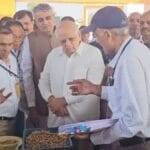Main Points In Hindi (मुख्य बातें – हिंदी में)
यहां दिए गए पाठ का मुख्य सारांश:
-
अनूठा शैक्षणिक कार्यक्रम: छठी कक्षा की 140 लड़कियों के लिए एक सह-पाठ्यचर्या पाठ्यक्रम – "हौज़ रानी, एक कहानी" शुरू किया गया है, जिसका उद्देश्य स्थानीय इतिहास और क्षेत्र के परिवर्तनों से परिचित कराना है।
-
स्थानीय इतिहास की जानकारी: प्रोफेसर नारायणी गुप्ता ने लड़कियों से साझा किया कि जब वे उनकी उम्र की थीं, तब दिल्ली का यह क्षेत्र बहुत अलग था, जिसमें खेत थे और बुनियादी सेवाएं भी सीमित थीं।
-
दिल्ली की भूगोल और जल आपूर्ति: शहरी योजनाकार शुभम मिश्रा ने दिल्ली के भूगोल और इसके जल आपूर्ति बुनियादी ढांचे के बारे में बताने के साथ-साथ तुगलक वंश की कहानियों को भी जोड़ा, जिससे बच्चों को अपने क्षेत्र का गहन ज्ञान प्राप्त हो सके।
-
इंटरैक्टिव शैक्षणिक विधियां: पाठ्यक्रम में गतिविधियों के माध्यम से बच्चों को अपने आसपास के जल तत्वों को पहचानने और स्थानीय भूगोल का अध्ययन करने के लिए प्रोत्साहित किया जा रहा है।
- समाजिक समावेश: कार्यक्रम में न केवल स्थानीय बच्चों को शामिल किया गया है बल्कि विभिन्न पृष्ठभूमियों के बच्चों को भी अपने शहर और संस्कृति से जोड़ा जाएगा, जिससे उन्हें अपनेपन और स्वामित्व की भावना मिलेगी।
Main Points In English(मुख्य बातें – अंग्रेज़ी में)
Here are the main points from the provided text:


-
Program for Local History: A new curriculum called "Hauz Rani, A Story" was launched for sixth-grade girls at a large school auditorium, aimed at introducing local history and environmental changes in Delhi through interactive activities and mapping.
-
Engaging with History: Historian Professor Narayani Gupta engaged the students by sharing her experiences of Delhi in her youth, illustrating the vast changes in infrastructure such as water supply and electricity over the decades.
-
Connection with Geography: Urban planner Shubham Mishra discussed the geographical context and historical significance of water sources in Delhi, encouraging students to explore their surroundings for places related to water.
-
Diverse Learning Experience: The three-month program includes a mix of topics, such as local buildings, food, and stories related to the area, culminating in an exhibition to showcase student projects.
- Inclusivity and Ownership: The initiative encourages children from diverse backgrounds, including those from UP, Bihar, Somalia, and Afghanistan, to connect with the history of their local area, fostering a sense of belonging and ownership.
Complete News In Hindi(पूरी खबर – हिंदी में)
लैवेंडर और सफेद चेकदार सलवार कमीज पहने छठी कक्षा की 140 लड़कियों का एक समूह हौज़ रानी के एक विशाल स्कूल सभागार में कार्यक्रम शुरू होने की प्रतीक्षा में बैठा है। वे बिल्कुल निश्चित नहीं हैं कि उनके लिए क्या होने वाला है, बस यह कि यह एक “अलग प्रकार की कक्षा” होने जा रही है।
जब इतिहासकार, प्रोफेसर नारायणी गुप्ता मंच पर आईं, तो उन्होंने उनसे एक सरल प्रश्न पूछा: “क्या आप जानते हैं कि मेरी उम्र कितनी है?” जब उसने उत्तर दिया, “मैं 81 वर्ष की हूं,” तो लड़कियों की आंखें चौड़ी हो गईं और वे हांफने लगीं और अपने हाथ पीछे कर हंसने लगीं।
“जब मैं आपकी उम्र का था, तो इस जगह को दिल्ली भी नहीं माना जाता था…,” प्रोफेसर गुप्ता ने आगे कहा। “…वहाँ खेत हुआ करते थे और हम कभी-कभी यहाँ आते थे और स्थानीय किसानों से सब्जियाँ खरीदते थे…यहाँ कोई बहता पानी या बिजली भी नहीं थी। ज़रा सोचिए, उस समय लोगों को पानी और बिजली कैसे मिलती थी? आप अपने परिवेश से बहुत कुछ सीख सकते हैं।”
प्रोफेसर गुप्ता ने शहरी योजनाकार शुभम मिश्रा और दिल्ली सरकार के सहयोग से सोमवार को छठी कक्षा के बच्चों को स्थानीय इतिहास से परिचित कराते हुए एक सह-पाठ्यचर्या पाठ्यक्रम – हौज़ रानी, एक कहानी – लॉन्च किया। पायलट प्रोजेक्ट, लॉन्च किया गया राजा राम मोहन राय हौज़ रानी में सर्वोदय कन्या विद्यालय का उद्देश्य स्थानीय बच्चों को मानचित्र, गतिविधियों और उन इलाकों की खोज के माध्यम से क्षेत्र के स्थानीय इतिहास और इसके बाद के परिवर्तन को सिखाना है जहां वे रहते हैं।
यह कोर्स तीन महीने का कार्यक्रम है और इसका समापन बच्चों के काम को प्रदर्शित करने वाली एक प्रदर्शनी में होगा।
अपने पहले सत्र में, मिश्रा ने दिल्ली के भूगोल और इसके सदियों पुराने जल आपूर्ति बुनियादी ढांचे के बचे हुए अवशेषों के बारे में गहराई से जानकारी ली और उन्हें तुगलक वंश की कहानियों से जोड़ा।
मिश्रा ने छात्रों से कहा, “हौज़ रानी नाम में इस बात का सुराग है कि इस जगह को यह नाम क्यों दिया गया।” “उस समय, लोग दो स्थानों पर पानी जमा करते थे – हौज़ (पानी की टंकी या झील) और बावली (बावड़ी),” उन्होंने इस कहानी पर गौर करने से पहले बताया कि कैसे गियास-उद-दीन तुगलक ने निज़ामुद्दीन के निर्माण को रोकने का प्रयास किया था। बावली ने लैंप के लिए तेल की आपूर्ति पर रोक लगा दी, जिससे मजदूरों को रात में बावड़ी का निर्माण करने में मदद मिली। अंततः सुल्तान को मजदूरों ने परास्त कर दिया, जिन्होंने बावली के पानी से अपने दीपक जलाए।
फिर बच्चों को अपने इलाकों के चारों ओर देखने और उन जगहों के नाम ढूंढने के लिए प्रोत्साहित किया गया जिनमें जल तत्व मौजूद हों। मिश्रा ने कहा, “मुद्दा इतिहास और भूगोल को स्थानीय चश्मे से देखने का है।” उन्होंने आगे कहा, “हम बच्चों को इतिहास और भूगोल पर अलग-अलग दृष्टिकोण प्रदान करने के लिए और अधिक विशेषज्ञों और विशेषज्ञों को लाएंगे।”
आने वाले हफ्तों के लिए पाठ योजना में विषयों का एक विविध मिश्रण शामिल है जैसे कि इमारतें, स्मारक, भोजन, निवासी और यहां तक कि सड़कें किसी इलाके के चरित्र और इतिहास को कैसे जोड़ती हैं। बच्चों को 3डी-रेंडर किए गए मानचित्र और मॉडल भी दिखाए जाएंगे कि साकेत-महरौली क्षेत्र मानव बस्तियों के आने से पहले कैसा दिखता था। क्षेत्र के बाद के परिवर्तन से पता चलेगा कि परिदृश्य कैसे बदल गया और जल आपूर्ति और स्वच्छता जैसी सुविधाएं अंततः कैसे सामने आईं।
स्कूल में टीजीटी हिंदी शिक्षिका अर्चना ने कहा: “मेरा जन्म किदवई नगर में हुआ था और मेरा परिवार मुझे बताता है कि साउथ एक्सटेंशन, महरौली, साकेत… ये सभी इलाके घने जंगल थे। मेरे चाचा ने मुझे बताया कि आज जहां अंसल प्लाजा और डीएलएफ मॉल (साकेत में) हैं, वहां पहले पेड़ों की भरमार हुआ करती थी… वहां लगभग कोई नहीं रहता था।’
उन्होंने कहा, “मुझे लगता है कि अगर हम अपने बुजुर्गों और पीढ़ियों से यहां रह रहे लोगों से बात करें तो हम अपने शहर के बारे में बहुत कुछ सीख सकते हैं।”
“हमारे स्कूल में ऐसे भी कई बच्चे हैं जो मूल रूप से दिल्ली के नहीं हैं। हमारे अधिकांश बच्चे यूपी और बिहार से संबंधित परिवारों से आते हैं… हमारे पास सोमालिया और अफगानिस्तान से भी बच्चे हैं। मुझे लगता है कि यह पाठ्यक्रम इन बच्चों को अपनेपन और स्वामित्व की भावना दे सकता है, ”पीजीटी हिंदी शिक्षिका रुचिका गुप्ता ने कहा।
मालवीय नगर के विधायक सोमनाथ भारती, जिन्होंने स्थानीय बच्चों में भाषा कौशल विकसित करने में मदद के लिए प्रोफेसर गुप्ता से संपर्क किया, इस कार्यक्रम में शामिल हुए। “मुझे लगता है कि किसी अन्य सरकार ने शिक्षा पर इतना ध्यान नहीं दिया है अरविन्द केजरीवालकी सरकार है. यह पाठ्यक्रम बच्चों को आलोचनात्मक सोच कौशल विकसित करने में मदद करेगा… हमने इस स्कूल को विशेष रूप से चुना क्योंकि हम लड़कियों को अपनी शिक्षा जारी रखने के लिए प्रोत्साहित करना चाहते थे…,” उन्होंने कहा।


Complete News In English(पूरी खबर – अंग्रेज़ी में)
A group of 140 sixth-grade girls, dressed in lavender and white checkered salwar kameez, is sitting in a large school auditorium in Hauz Rani, waiting for a special program to start. They are not really sure what to expect, only that it will be a “different kind of class.”
When historian Professor Narayani Gupta stepped onto the stage, she asked the girls a simple question: “Do you know how old I am?” When she revealed that she is 81 years old, the girls’ eyes widened, and they gasped and laughed, surprised by her age.
She continued, “When I was your age, this place wasn’t considered Delhi… there used to be fields here, and we would sometimes come and buy vegetables from local farmers… There was no running water or electricity. Can you imagine how people got water and electricity back then? You can learn a lot from your surroundings.”
On Monday, Professor Gupta launched a curriculum called “Hauz Rani, A Story,” in collaboration with urban planner Shubham Mishra and the Delhi government, aimed at introducing sixth-grade students to local history. The pilot project, inspired by Raja Ram Mohan Roy, aims to teach local children about the area’s history and transformations through maps and activities related to where they live.
This three-month course will culminate in an exhibition showcasing the children’s work.
In the first session, Mishra provided detailed insights into Delhi’s geography and its ancient water supply infrastructure, connecting it to stories from the Tughlaq dynasty. He explained how the name “Hauz Rani” relates to the historical context of water collection in that area.
Children were encouraged to look around their neighborhoods and identify places related to water. Mishra emphasized the importance of viewing history and geography from a local perspective and mentioned that more experts would be brought in to offer different viewpoints.
The lesson plan for the upcoming weeks includes a variety of topics like buildings, monuments, food, residents, and how streets contribute to a neighborhood’s character and history. Children will also see 3D-rendered maps and models showing what the Saket-Mahrauli area looked like before humans inhabited it. They will learn about the changes in the landscape and how facilities like water supply and sanitation came into being.
Arjuna, a Hindi teacher at the school, shared her own experiences, saying she was born in Kidwai Nagar and learned from her family that areas like South Extension, Mehrauli, and Saket used to be dense forests.
She said, “I think we can learn a lot about our city by talking to older generations.”
Ruchika Gupta, a senior Hindi teacher, noted that many students are not originally from Delhi, coming from families in Uttar Pradesh and Bihar, and even Somalia and Afghanistan. She believes this curriculum can help these children feel a sense of belonging and ownership.
Somnath Bharti, a local MLA, attended the program and mentioned that he approached Professor Gupta to help develop language skills among local children. He emphasized that no previous government has focused as much on education as Arvind Kejriwal’s government and that this curriculum would help children develop critical thinking skills. They chose this school specifically to encourage girls to continue their education.
Source link








